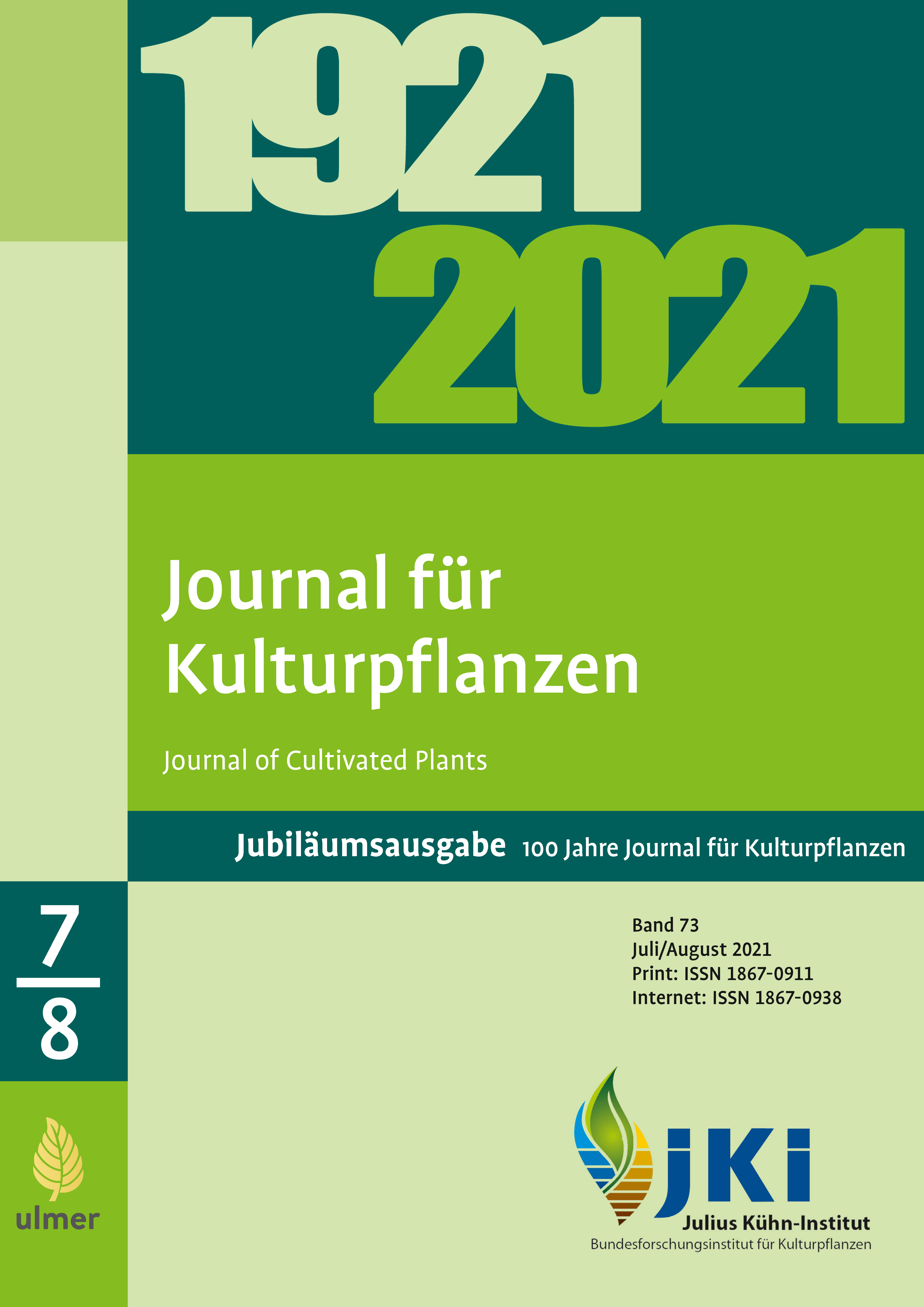Plant hygiene, plant quarantine, plant health - review of 100 years of successful development
DOI:
https://doi.org/10.5073/JfK.2021.07-08.07Keywords:
Plant quarantine, Plant health, Surveys, Pest Risk Analysis, PRA, Quarantine PestAbstract
Based on an evaluation of the publications of the Journal für Kulturpflanzen and its predecessor journals up to the first issue in 1921, the development of the discipline of plant health over the last 100 years is traced. Already in the first volume, plant health regulations can be found as well as information on the quarantine pest potato wart (Synchytrium endobioticum), which is still relevant today. Colorado potato beetle (Leptinotarsa decemlineata) and San José scale (Comstockapsis perniciosa) are in focus in the 1930 s and in the post-war period. Potato cyst nematodes (Globodera pallida and G. rostochiensis) and potato bacterioses (Ralstonia solanacearum, Clavibacter sepedonicus) as well as fire blight (Erwinia amylovora) gain importance in the later years. At the turn of the millennium, increasing attention is also paid to harmful organisms in forests or urban green areas (e.g. Anoplophora glabripennis, Dothistroma pini). With the evaluation, developments can be shown that still determine the plant health system today. Surveys and pest risk analyses are important elements in this context.
Downloads
Published
Issue
Section
License
Copyright (c) 2021 Bernhard Carl Schäfer, Ernst Pfeilstetter, Gritta Schrader, Silke Steinmöller

This work is licensed under a Creative Commons Attribution 4.0 International License.
The content of the journal is licensed under the Creative Commons Attribution 4.0 License. Any user is free to share and adapt (remix, transform, build upon) the content as long as the original publication is attributed (authors, title, year, journal, issue, pages).
The copyright of the published work remains with the authors. The authors grant the Journal of Cultivated Plants, the Julius Kühn-Institut and the OpenAgrar repository the non-exclusive right to distribute and exploit the work.







